The more things change, the more they stay the same.
It’s been a year since I last checked out a new Knowledge Zenith product. At that time, the rather good ZSX Terminator IEMs seemed to indicate that KZ was maturing and fine-tuning their product lineup. KZ seemed to be poised to move slightly upscale and challenge the status quo of more established brands.
Up till then, KZ was consistently (and constantly) pumping out virtually indistinguishable IEMs with three-letter-and-number-combo names. They broke the $100 price point with a few high driver-count models and seemed to be testing their place in the market. And then they jumped into the TWS Bluetooth IEM manufacturing and the flow of wired IEMs slowed down.
After about a year of producing a half dozen (or so) wireless Bluetooth IEMs, KZ is back in the wired IEM game! And they’ve really stirred things up. Not only have they entirely changed their approach, but they have also dropped an innovative and exciting new product, that no one could have anticipated!
Well…no. Not really.
What we do have is yet another KZ hybrid IEM, which comes in the same old package, with the same old cable design, in the same old acrylic and metal shell shape and materials, and (unsurprisingly) using the same old naming convention.
Behold… the KZ ZAX! Priced at $60 USD, it’s firmly entrenched in the very competitive territory KZ carved out for itself years ago.
The ZAX consists of a 10mm dynamic driver (DD) paired with seven balanced armature (BA) drivers per shell. To be fair, sixteen is a very high driver count for such petit and inexpensive IEMs. In that way, the ZAX are a technological marvel.

I admit, I’ve changed over the last year or so. I’ve experienced some great IEMs in the $100-$300 range, so I’m finding it tough to get very excited about what appears to be the ‘same old thing’ from KZ. Full disclosure, I’ve recently given away all my KZ IEMs, as while they are often well made and competitive at their price point, they haven’t quite been giant killers when challenging more upscale and refined sounding options.
Is the ZAX greater than the sum of its parts, or is it simply more of the same from KZ?
- 16 drivers in a tiny package is an impressive accomplishment.
- The sound is remarkably cohesive for such a high driver count.
- Bass is reasonably extended and tight.
- Good value at the inexpensive price point.
- Clean and crisp sound with a decent soundstage.
- The upper midrange and lower treble are a bit sharp sounding and can be fatiguing.
- It would be nice to see KZ innovate rather than just recombine drivers and keep playing it safe.
- The same old accessory package is getting stale.
KZ Acoustics Overview
KZ Accostics was founded in 2008 by classical musician Zen Li and former Audio-Technica engineer Keith Yue. It is a public brand for the Shenzhen Yuanze Electronics Company located in Guangdong, China. In 2010 KZ started selling products on the Chinese shopping website Taobao, and in 2013 the KZ brand started being widely promoted. Most recently in 2019, KZ has started producing TWS IEMs.
KZ has generated a huge amount of industry buzz by creating products that have seriously redefined the ratio of price to performance. Initially, there was seemingly unending hype over KZ (as of writing: approximately 3500 pages in a single Head-Fi post). The caveat? Most discussions conclude with the idea that although their IEMs may not produce the absolute best sound, they are difficult to beat at the low price point.
More recently, some of their more technologically advanced and correspondingly higher-priced models, have tried to elevate the brand as a mainstream competitor. However, KZ has received criticism for copying the design and form factor of high-end models from Campfire Audio and Audio-Technica.
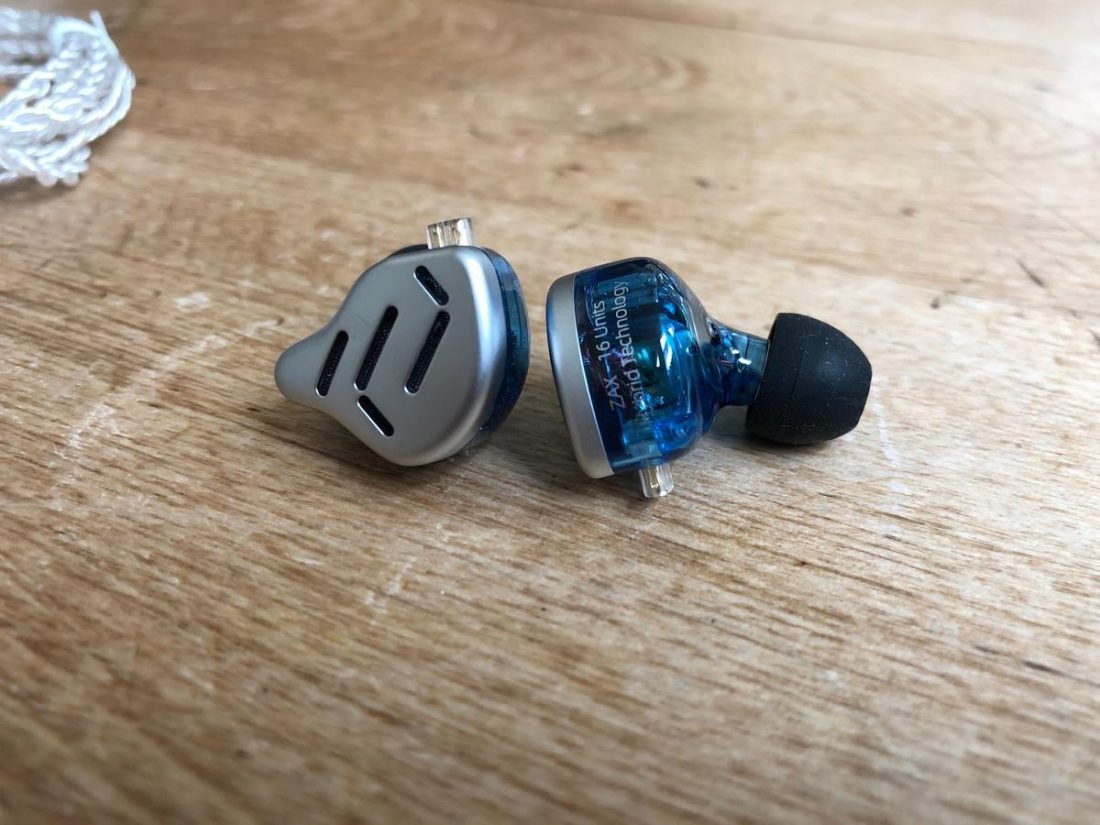
KZ IEM Series
KZ is also known for releasing many different models, so it gets convoluted when trying to figure out their hierarchy of IEMs. In a nutshell, the KZ offerings include the following series:
- AS: ASF, ASX, AS06, AS10, AS12, AS16 (balanced armature drivers – # denotes total drivers)
- AT: ATE, ATES, ATR (single dynamic driver)
- BA: BA10 (balanced armature drivers – # denotes total drivers)
- BT: BTE (hybrid BA and dynamic drivers – Bluetooth)
- ED: EDR2, EDX, ED3, ED4, ED7, ED9, ED12, ED15, ED16 (typically a single dynamic driver – ED15 and ED16 are hybrid)
- ES: ES3, ES4 (hybrid – 1 BA + 1 dynamic driver)
- HD: HDS3, HD9 (single dynamic driver)
- ZS: ZSA, ZAX, ZSE, ZSN, ZSN Pro, ZSN Pro X, ZSR, ZST, ZST Pro, ZST Colorful, ZST X, ZSX, ZS1, ZS2, ZS3, ZS4, ZS5 (v1 and v2), ZS6, ZS7, ZS10, ZS10 Pro, (ZS1-3 and ZSE are dual dynamic driver, other ZS are hybrid)
- YZ: YZ41, YZ46, YZ63, YZ66
- Bluetooth TWS Models: E10, SA08, S1, S1D, S2, T1, Z1
CCA and Tripowin
To further complicate things, KZ has recently started releasing IEMs under other brand names as well. Clear Concept Audio (CCA) and Tripowin are sister brands and have released very similar IEMs (sharing components, technology, design, ear tips, etc. with KZ models).
While alike, the sister IEMs are slightly altered products than the KZ versions. Differences can include driver selection, cables, shape, internal structure, etc. and it varies by model. However, they are targeted at the very same budget IEM market.
CCA IEMs
- C04: Hybrid – 1 BA + 1 DD. Similar to the KZ ZSN Pro housing design. Again # denotes the total number of drivers per both IEMs.
- C10: Hybrid – 4 BA + 1 DD. Similar to the KZ ZSN housing design and the ZS10 driver lineup (but with a different dynamic driver).
- C10 Pro: Hybrid – 4BA + 1x 10mm DD. 2x 30095 BA + 2x 50060 BA per side.
- C12: Hybrid – 5 BA + 1 DD. Similar to the AS16 housing design and the ZSX driver lineup. Uses a single 300095 treble BA per side.
- C16: 8 BA. Similar to the AS10 housing design. 2x 22955 bass BA, 2x 29689 midrange BA + 4x 30095 treble BA per side. Differs from AS16 which uses 4x 31736 treble BA.
- CA4: Hybrid – 1BA + 1x 10mm tesla DD (shared with the ZS10 Pro) + 1x 30095 BA per side
- CA16: Hybrid – 7BA + 1x 7mm DD. 3x 30095 high frequency balanced armatures + 4x 50024 mid-frequency balanced armatures.
- Bluetooth TWS Models: CX4, CX10
Tripowin IEMs
- TP10: 5 BA. Similar to the AS16 housing design but with a flat front. 1x 22955 bass BA, 2x 29689 midrange BA, and 2x 30095 treble BA per side.

Technical Specifications
- Shell: Acrylic with a zinc alloy faceplate
- Drivers: 16 total drivers: 1x 10mm PEK spring diaphragm DD + 7 BA (2x 30019 + 4x 50024 + 1x 30095).
- Sensitivity: 113db
- Impedance: 24Ohms
- Frequency: 10-40000Hz
- Cable: 4 strands of 25 wire cores, oxygen-free copper, silver-plated cable
- Cable length: 1.2m
- Connector: 0.75mm
- Plug: 3.5mm
- Colors: Blue acrylic + silver zinc faceplate, black acrylic + black zinc faceplate
- Weight: 27 grams
KZ ZAX’s Packaging
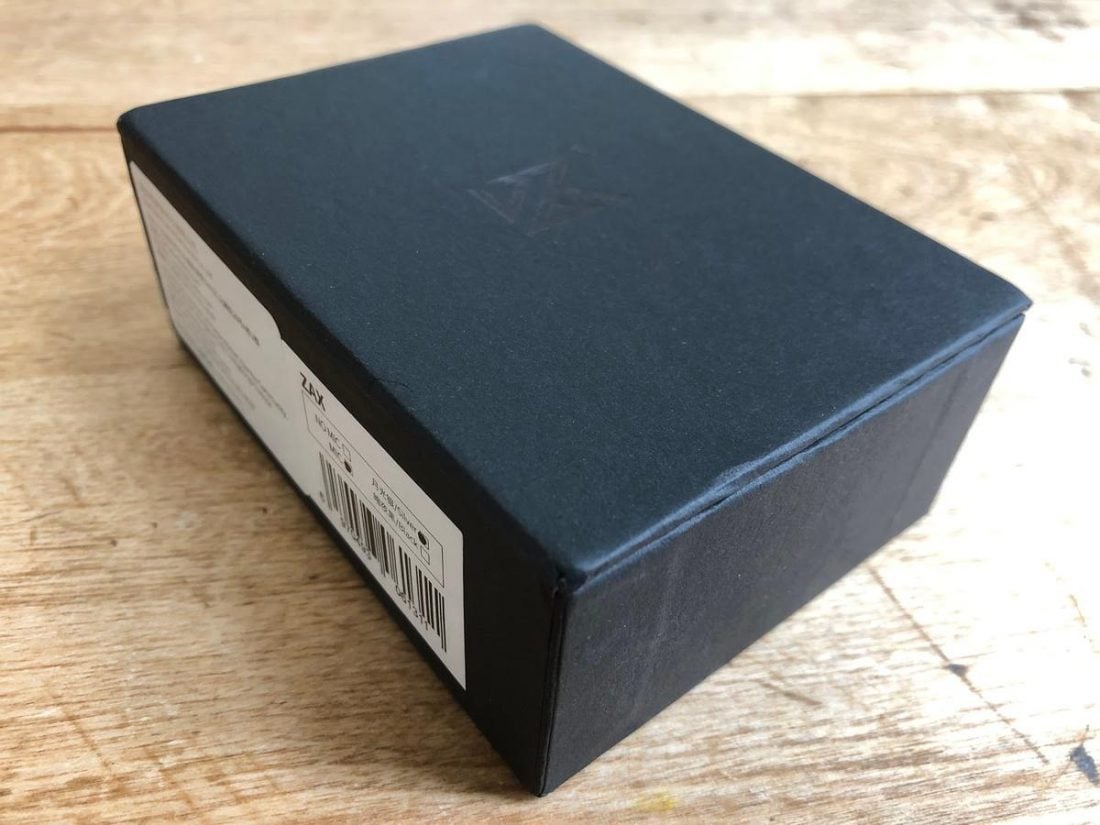
In last year’s ZSX review, I stated that there is “absolutely nothing new here”. A year later and nothing has changed. Absolutely nothing.
Present again is the small book style KZ black cardboard box with a foam insert and an (entirely pointless) engraved metal plate. The IEMs are safely nestled in the black foam, with the meager accessories tucked under the foam insert.
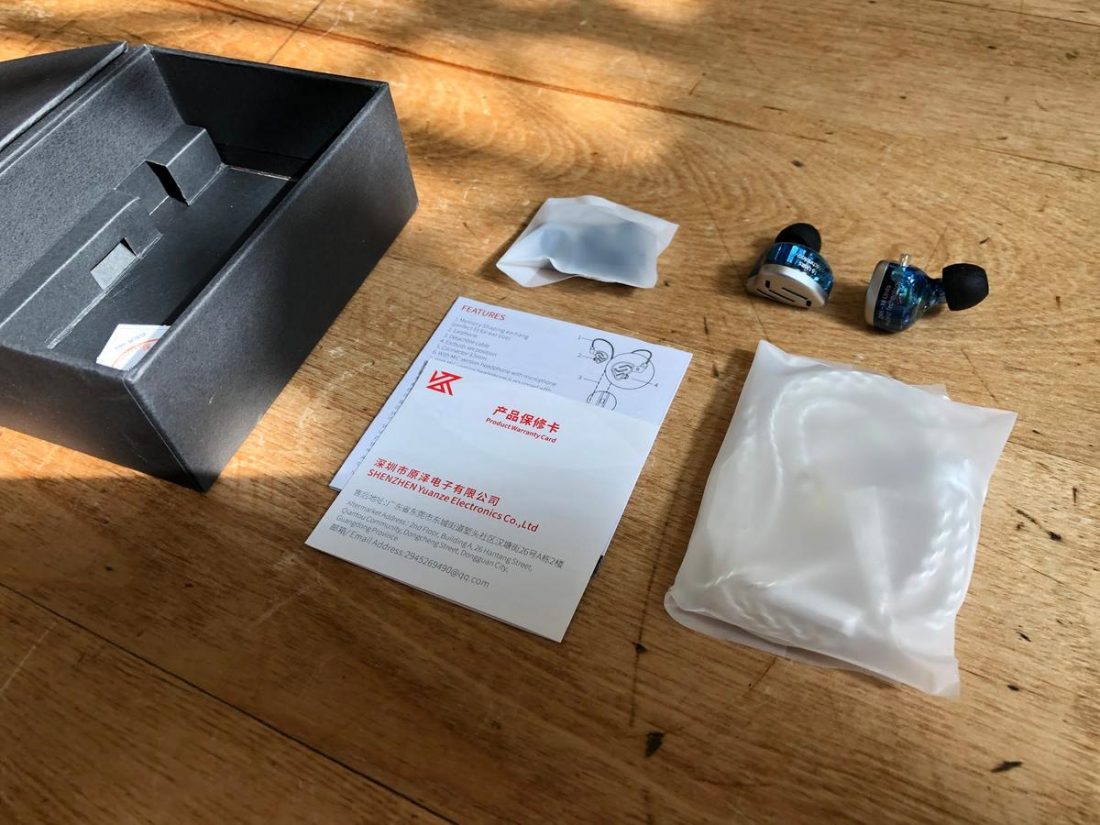
In the box
- ZAX IEMs.
- Silver-colored cable with clear rubber connectors and white mic control.
- A plastic bag containing 2 pairs (small and large) of star patterned silicone ear tips. The ear tips on the IEMs themselves are medium-sized.
- Warranty card. 12 months if sold by the KZ official store.
- Instruction card.
- Small cardboard square “certificate”.
Cable
KZ proudly touts the included ZAX cable as being made of silver-plated, high purity, oxygen-free copper with 4 strands of 25-core wires. They state that the “…upgraded high-purity cable is the basis of high-quality sound. It greatly decrease [sic] the distortion and the sound is crystal clear.”
It’s pretty common for the stock KZ cable to receive complaints and criticism regarding looks, y-splitter location (too low), and is prone to tangle. I have often disagreed, stating that it looks decently attractive, works fine and I’ve yet to break one.
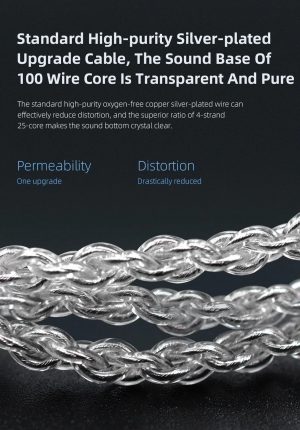
While the description and feature set of the ZAX cable looks impressive on paper, I feel that this cable imparts a less favorable impression than the previous copper-colored versions.
It works and sounds fine, and the silvery color compliments the blue ZAX IEMs, but the strands going to the individual IEMs after the y-split seem awfully thin and fragile. The white plastic microphone and single button control isn’t a match for the clear rubber connectors and y-split.
The excellent Thieaudio Voyager 3 cable has spoiled me, and I can’t help but compare all IEM cables to that one.
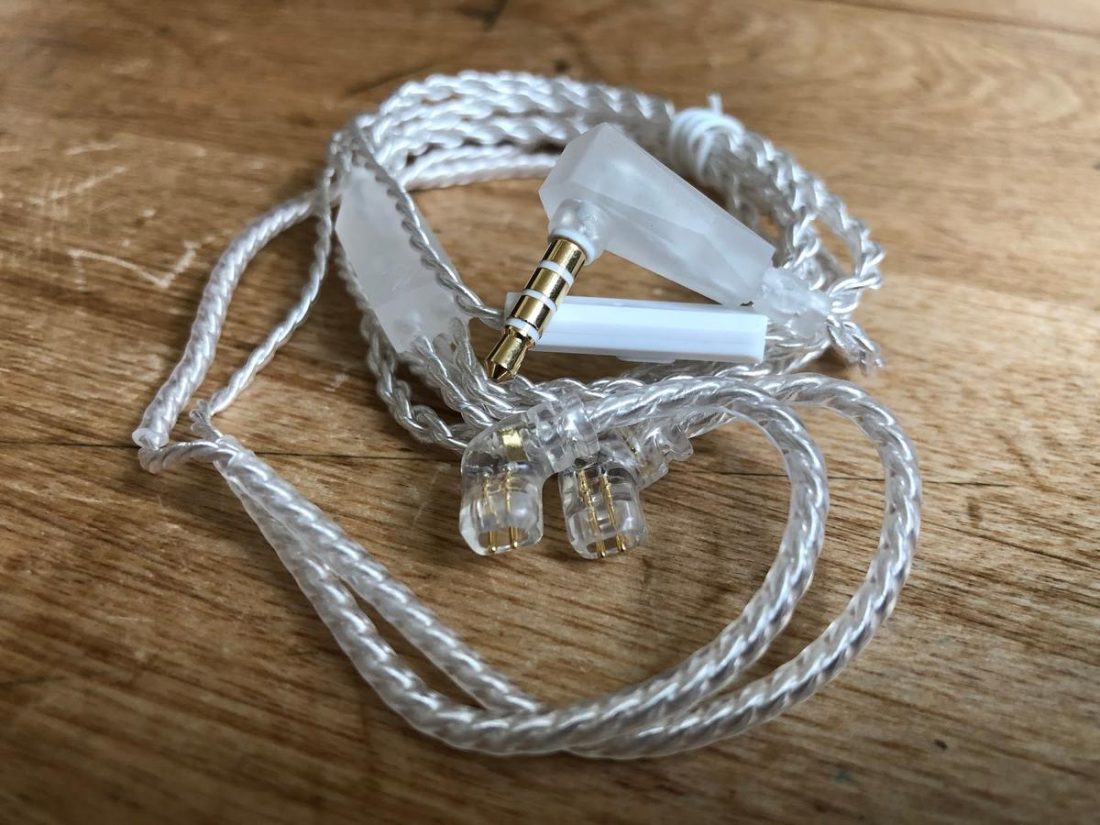
The extended protruding socket contains the 0.75mm 2-pin connectors, which are standard for KZ’s previous models and will fit their optional APT-X HD Bluetooth cable adapter. While some folks complain that this pin design is more fragile, KZ claims that it yields “higher durability.” I’m pretty careful with my gear, and I’ve yet to break one.
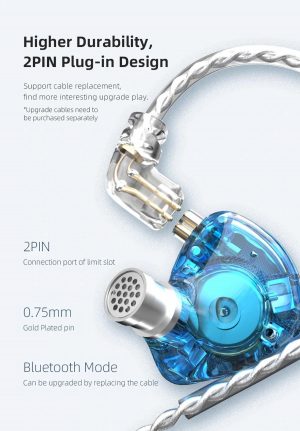
Design
ZAX marketing literature describes the new zinc alloy top plates as “…light luxury pearl chrome plating, the cast zinc alloy shines brightly. Electroplating pearl chromium technology makes it shine with pearly luster, effectively prevents metal oxidation, and is still beautiful as new after long term use.”
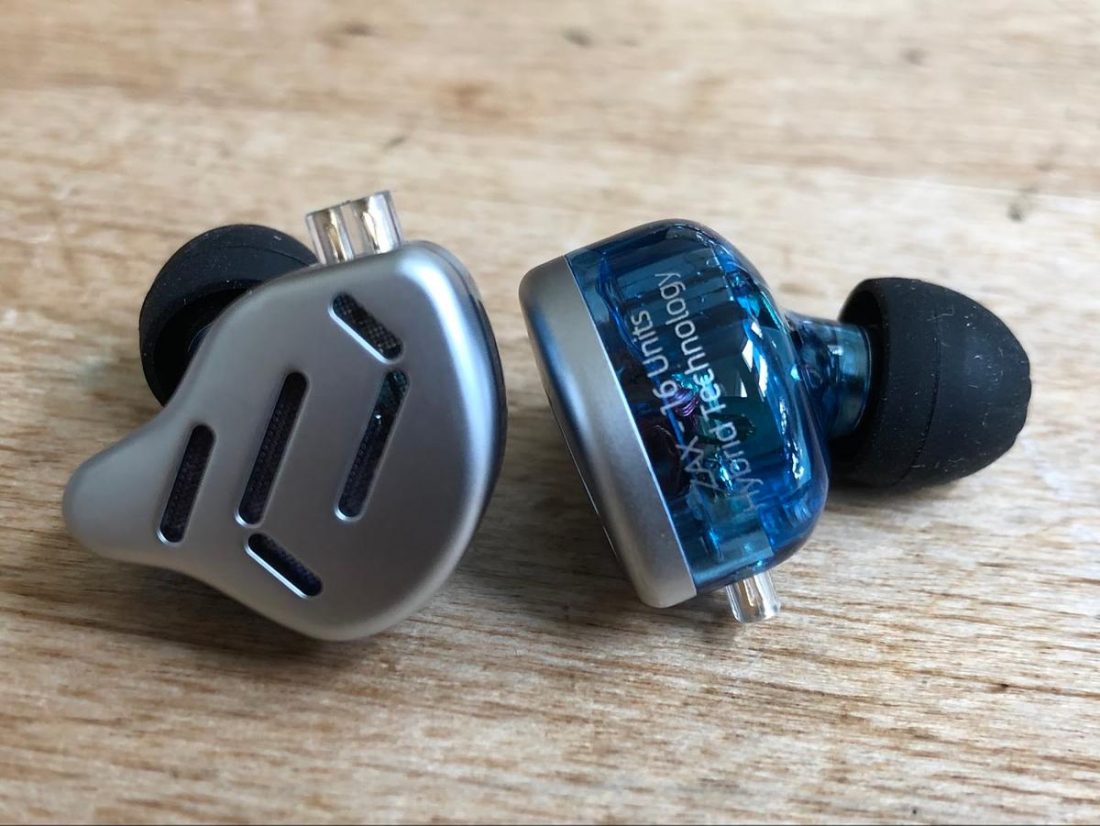
In-person, it’s a matte finish metal, that is a bit lighter in tone than the color of a MacBook. The purely decorative cut-outs (the only port appears to be a tiny hole on the opposite side near the nozzle) are reminiscent of an exploded multi-segment digital display.
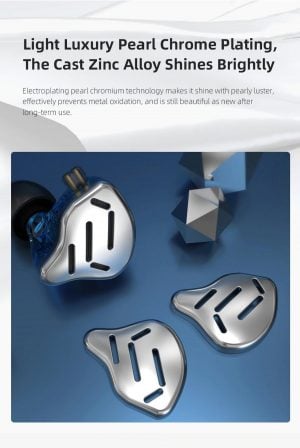
At about 27 grams, the ZAX are lightweight and surprisingly small. While shaped quite similarly to the Thieaudio Voyager 3, the 8 drivers per shell ZAX are physically smaller than the (mere) 3 drivers per shell Voyager 3.
The shell is a typical KZ smooth finished resin and is translucent enough to clearly see the drivers contained within. The large DD is virtually surrounded by the BA drivers. External fit and finish are essentially flawless and indistinguishable from the quality of far more expensive IEMs. KZ does excel at inexpensive shell construction.
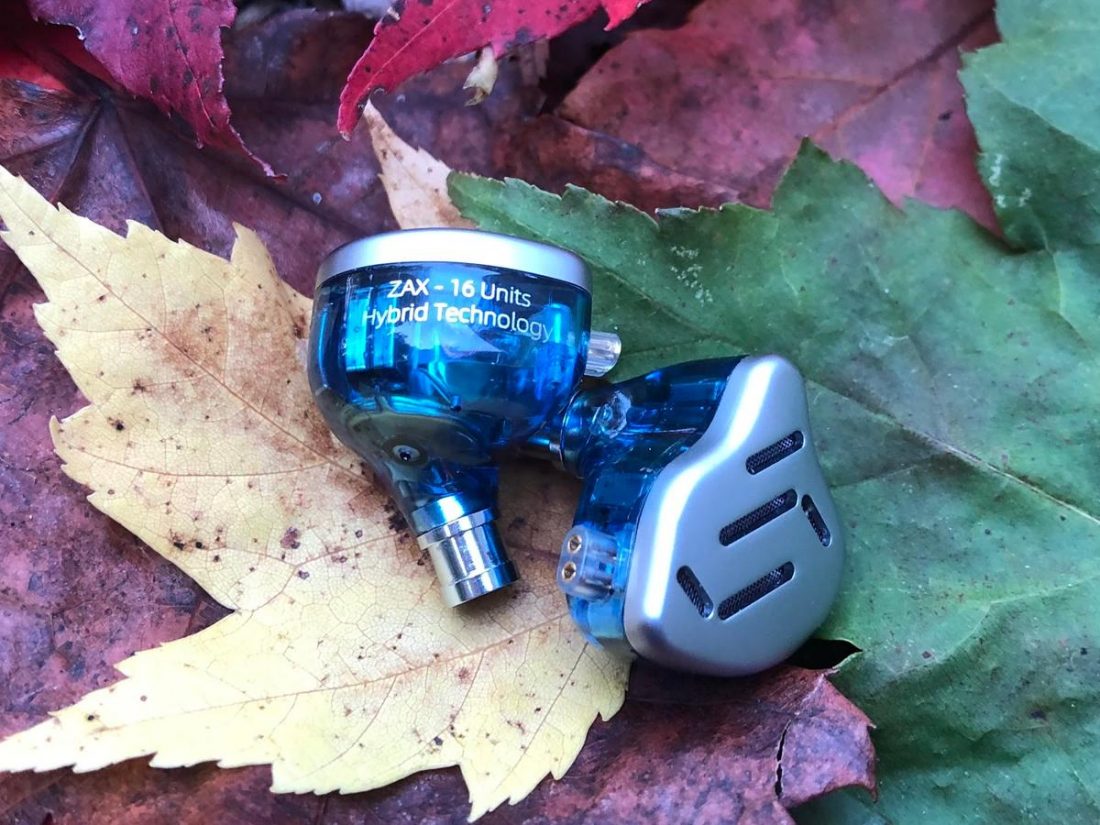
The nozzles are made of color-coded metal (silver for the Blue and gold for the Black ZAX). Both nozzles have silver round holed screens recessed in them and do a very good job of securely fastening the ear tips to the shells while remaining quite easy to remove and replace the tips as desired.
Other resin shell construction IEMs can learn something from this approach, as I often run into tips coming off when removing resin tipped IEMs from my ears.
Comfort
As mentioned, the shells are smoothly finished and small enough to fit just about any ear. The cable is likewise lightweight and curves nicely over the ear to hold the IEMs. This ergonomic design should be comfortable for virtually anyone.
KZ ZAX’s Internals
It’s saying something that seeing tiny, relatively inexpensive IEMS listed as containing 16 discrete drivers isn’t especially noteworthy. So much has changed over the last few years with what is possible to expect in IEMs at all price points.
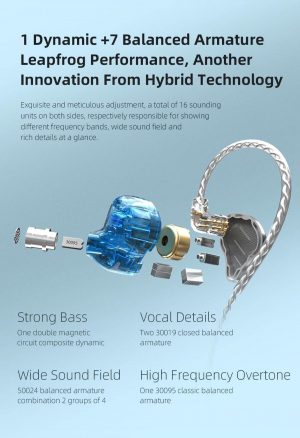
The old adage comes into play, ‘more isn’t necessarily better’ or perhaps ‘quality over quantity’. There are still amazing single driver IEMs and there are some disjointed multi-driver IEMs that can’t quite produce a cohesive sound.
There are four distinct models of drivers used in each ZAX shell. One dynamic driver for low frequencies, two 30019 balanced armatures for vocal details, four 50024 balanced armatures for a wide sound field, and a single 30095 balanced armature, located in the nozzle, for high-frequency overtones.
The 30019 BA seems to indicate the Knowles WBFK-30019-000 model BA, however “Knowles” isn’t directly referenced in any of the support material for the ZAX, so it is unlikely that they are authentic Knowles drivers. The price of a single Knowles driver also seems too high to include four of them in a pair of $60 IEMs.
The 30095 BA is also reminiscent of Knowles naming convention but is much more likely the same driver used in the ES4, ZS5, ZS10, ZSN, and other models.
The CCA CA16 IEM marked the first time KZ adopted the customized 50024 balanced armature drivers. This other 16-driver hybrid IEM differs from the ZAX by using a 7mm DD, 3x 30095 high frequency balanced armatures, and 2x 50024 mid-frequency balanced armatures.
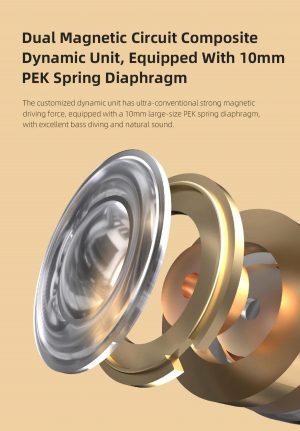
KZ claims that “the customized dynamic unit has ultra-convention strong magnetic driving force, equipped with a 10mm large-size PEK spring diaphragm, with excellent bass diving and natural sound.”
KZ further states that “…the balanced armatures combination has a broad sound field and strong analysis which can be widely adapted to a variety of music styles, such as symphony, chamber string music and popular music and so on.” So, I guess it is time to talk about how all that technology sounds.
Sound Signature
Let’s get something out of the way right upfront. If you own the KZ ZS10 Pro or the ZSX, you are intimately familiar with the general sound of the ZAX. The ZAX absolutely belongs to the same family of v-shaped sounding IEMs.
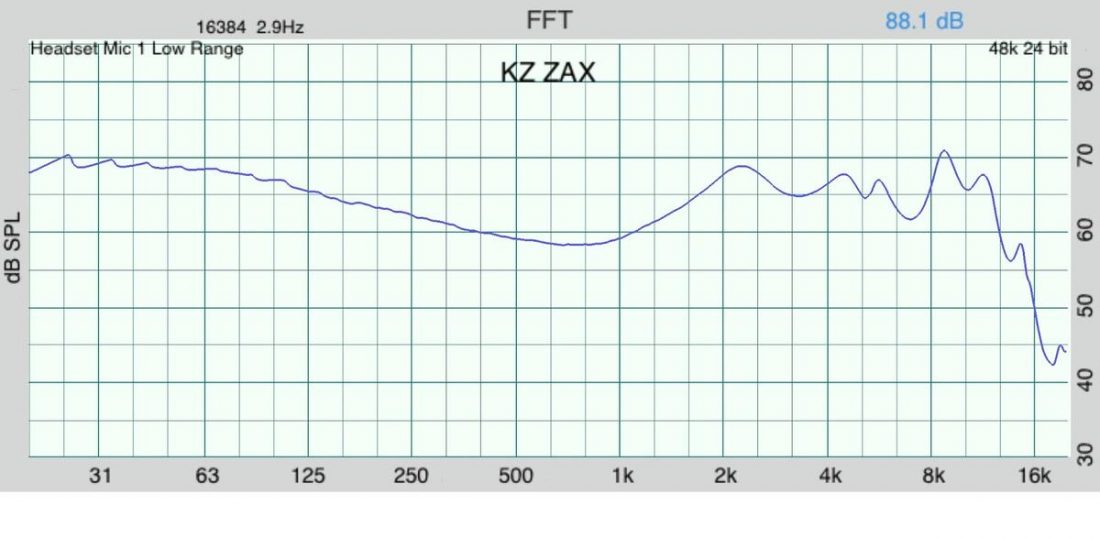
The ZAX represents a small iterative change to the previous KZ headphones, but to my ears, edges them out ever so slightly. The impression of the soundstage may be slightly larger with the ZAX, while coherence and detail are quite similar. They are slightly smaller, so those with diminutive ears may find the ZAX the most comfortable of the three.
The ZAX have a boosted upper midrange sound that yields good instrument separation but at the expense of sounding a bit sharp and fatiguing for long listening sessions.
At 24 Ohms and 113db sensitivity, they are very easy to power with most any portable source. I used the ZAX mainly with the stock iPhone dongle and the Chord Mojo DAC/Amp and they don’t seem to benefit greatly with more amplification.
Bass
The ZAX do have a somewhat elevated low end, with decent sub-bass extension. Overall the bass is controlled, both tight and fast, which makes them a fun listen for electronic or other bass focused genres. I tend to like a meaty sound to my music, so I’m fine with this trade-off from neutrality.
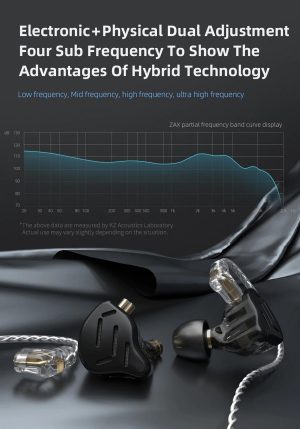
Midrange
The midrange is fairly neutral and low in the mix, especially compared to the extended extremes of the frequency range. It’s clean and certainly far from veiled, but just doesn’t compete with the boosted bass and treble.
As the midrange transitions into the higher frequencies, the sound comes across as a bit harsh and I find the ZAX somewhat aggressive and fatiguing for longer listening sessions.
Treble
Treble is defined and very present in the sound signature. It comes across as quite bright and extended, which gives a certain sparkle and airiness to the music. It also certainly yields the impression of detail and spaciousness. I don’t find the ZAX overly sibilant, and my only real complaint is at the crossover from midrange to treble feeling sharp sounding.
The Challenge of In-Ear Monitor Reviews
I’d like to add a caveat. IEMs are notoriously difficult to review and compared to full-size headphones, it is problematic to trust those review findings will apply to all readers.
While the size of one’s ear may impact the comfort or the sound of a full-size headphone, small details like the inner shape of a reviewer’s ear and the fit of an IEM greatly impacts not just the listener’s comfort but dramatically changes the perceived performance of an IEM.
This is compounded by the plethora of ear tip sizes, materials, and shapes (which may or may not be included with the IEM) all of which uniquely fit different people. Most significantly, the quality of the ear tip seal within the ear changes the sound. So, beware dear reader, what suits one reviewer may not apply to you.
Conclusion
Thank you to Linsoul for providing this review pair of ZAX to Headphonesty for review. If you’d like to purchase the ZAX they are available here.
You may have picked up on a certain lack of enthusiasm with this review of the ZAX. It’s not that the ZAX aren’t a perfectly decent pair of IEMs. In fact, they are quite good performers and capable at their price point. The ZAX are well-made and have a clear fun sound.
The lack of enthusiasm can be attributed to a combination of reviewer fatigue and missed opportunity.

A year ago, the ZSX were an exciting release. KZ appeared to have learned from their multitude of previous models, and the ZSX represented their refined pinnacle. The KZ AS16 was a departure from their v-shaped sound signature, and KZ appeared to be on the edge of making some interesting new wired IEMs.
Then KZ took about a year off to make TWS models.
After such a long break between models (a virtual eternity for KZ who seemed to release new products mere weeks apart), the ZAX is awfully close to the ZSX. The ZSX was good, and to be fair, so is the iterative release of the ZAX. It’s just not particularly exciting or innovative. A year adds a lot more competitors and expectations for enthusiasts.
So, I’d recommend that current ZS10 Pro or ZSX owners look elsewhere for their next purchase. There’s no real reason to reinvent the wheel, and other manufacturers will offer you a new experience.
Alternatively, potential new KZ owners could do a lot worse than the ZAX at $60.
The ZAX offers good performance for the price but doesn’t offer a very compelling reason for current KZ owners to upgrade. Detail, soundstage, openness may all be slightly better than their previous models, but it’s just not enough of a significant leap forward to generate much excitement.

Review KZ ZST X Please
You send ’em and I’ll review ’em. 🙂
Thanks for the review. I have AS16 and I’m really happy with it’s detailed and powerfull sound on stage as a mucisian (vocal). It does not lose instrument separation like my older Shure SE215. I had difficulties about hearing the details especially during long sessions and BA drivers are a blessing in that department. And I have a Tool tribute band and I need to hear details and really quick responses in all frequencies including kick drums, I need to follow every hit and every note instantly. But I was wondering if I could get a little more power of bass frequencies with one DD with these BA drivers and I saw ZAX. I read in your review that ZAX has a v-shaped sound and before I lose my appetite for it, I wanted to ask your opinion about ZAX vs AS16. Is the sound quality better in AS16? Would I lose the quick response in kick and bass or is it still tight?
Thanks in advance.
It’s been a while since I’ve listened to either, but the ZAX has a more powerful low end. They are more ‘fun’, rather than ‘revealing’ in general to listen to.
Hello, in your opinion what would be the most neutral sounding IEM offering by KZ?
I owned ZST before and the sound profile is very flat to me which I love, but I’m wondering if there is other KZ earphones that has a flat profile to it, other than the ZST of course.
I also own a pair of Massdrop Nuforce EDC3 and ever since I owned that earphones I love monitor earphones.
We’ve all got different expectations and preferences. Glad you enjoy them.